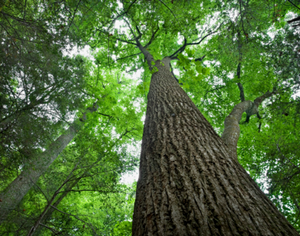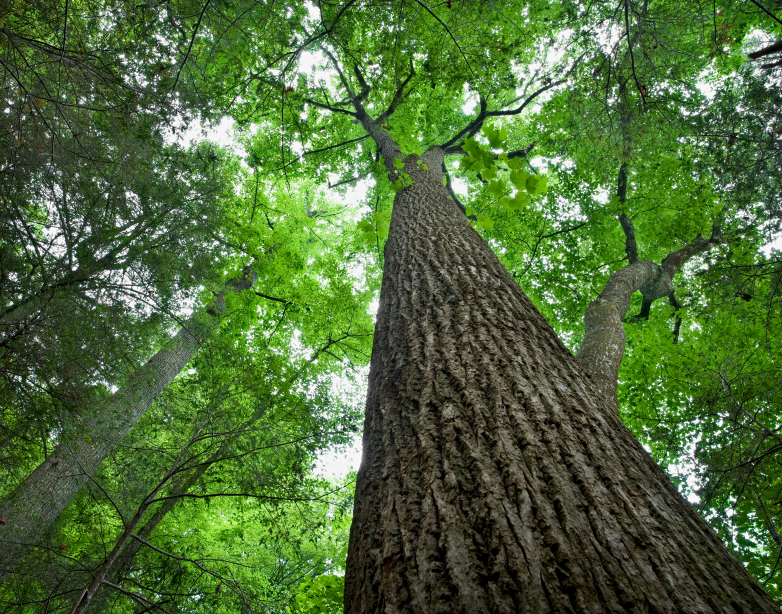Leaf Size Fixed by Tree Physics
A theory in Physical Review Letters explains why the leaves of the tallest trees are all about the same size, regardless of species, and also suggests why there is a limit on tree height. The limits are set by the properties of the branching vascular system that distributes sugar-rich fluids throughout the tree, according to the researchers. They compared their theory’s predictions with data from many species and found good agreement. The theory provides a physical explanation for a phenomenon that had not been addressed by biologists.
Tree leaves vary in size from a few millimeters to over a meter, but the range in size decreases as trees get taller, with all of the tallest species having roughly – -centimeter-wide leaves. Botanists haven’t explained these observations, but biophysicist Kaare Jensen of Harvard University and biologist Maciej Zwieniecki, now of the University of California, Davis, suspected that there might be a simple explanation based on the principles of fluid flow within trees. They developed a theory that describes the effects of leaf size on the efficiency of the flow of energy-rich sugars through the tree’s phloem vascular system.
Through photosynthesis, a leaf generates the energy-rich fluid, which then flows through phloem channels out to other parts of the tree, such as roots and fruits. Within the leaf, the flow through each channel picks up speed on its way from the extremities toward the stem, as increasing amounts of water are drawn into the sugar-rich channel by osmosis, like so many tributaries merging into a large river. The longer the leaf, the faster the flow becomes by the time it reaches the channel “mouth,” where the fluid exits the leaf. When it reaches the trunk, the fluid encounters resistance that depends on the tree’s height.
The key question for Jensen and Zwieniecki was how leaf length and tree height combine to determine this flow speed and thus the efficiency with which energy-rich fluid is transported around the plant. As trees get taller, they reasoned, trunk resistance slows the flow. Increasing leaf size might partly offset this, but eventually the trunk resistance becomes so large and dominant that leaf size has little effect on the flow rate. Beyond a certain leaf size, there’s no advantage in making the leaves any bigger.
So the maximum size comes at the point of diminishing returns, where the metabolic investment in larger leaves is too big to be advantageous, according to Jensen and Zwienecki’s theory. Meanwhile, they figured that if the leaf is too small, the flow becomes too sluggish to get through the trunk system at a reasonable rate, which sets the minimum leaf size.
These limits, as predicted by the researchers’ equations, match quantitatively with those observed in the wild in many species, the team shows. What’s more, the curves for maximum and minimum leaf size converge with increasing tree height and cross at a height of around 100 meters, close to the height of the tallest trees. If a tree were any taller, the theory predicts that there is no leaf size that could meet its vascular requirements. The team also shows that their previous direct measurements of flow rates in plants [1] match their current predictions.
“I think they make a very good case,” says biomechanics expert Steven Vogel of Duke University in North Carolina. “Arguing from transport of photosynthetic product in organisms for whom that production is central provides a good basis for the kind of generality that they claim.”
–Philip Ball
Philip Ball is a freelance science writer in London. His latest book is How Life Works (Picador, 2024).
References
- K. H. Jensen, J. Lee, T. Bohr, H. Bruus, N. M. Holbrook, and M. A. Zwieniecki, “Optimality of the Münch Mechanism for Translocation of Sugars in Plants,” J. R. Soc. Interface 8, 1155 (2011)





